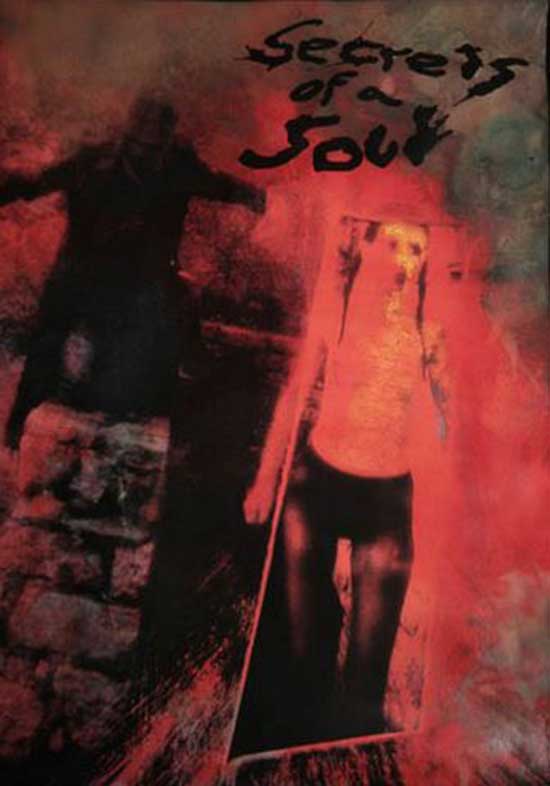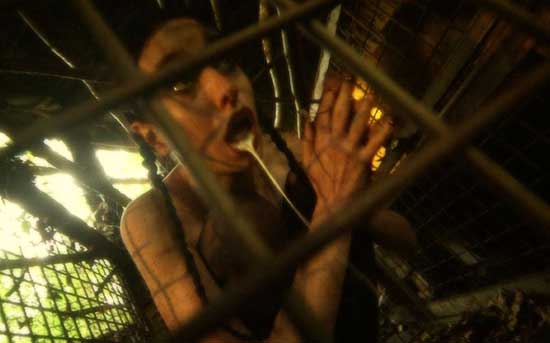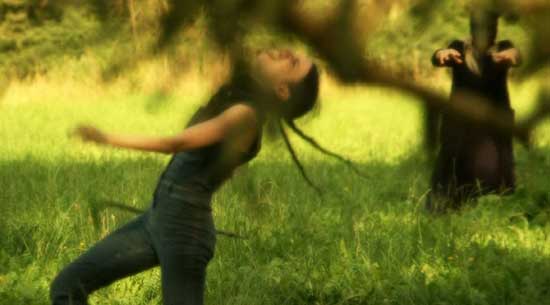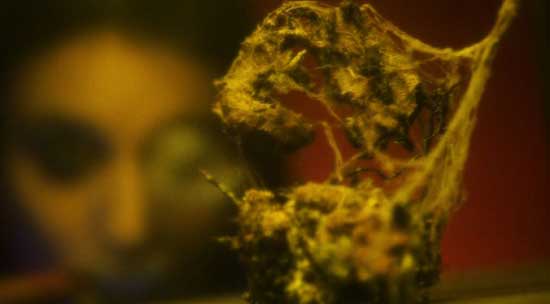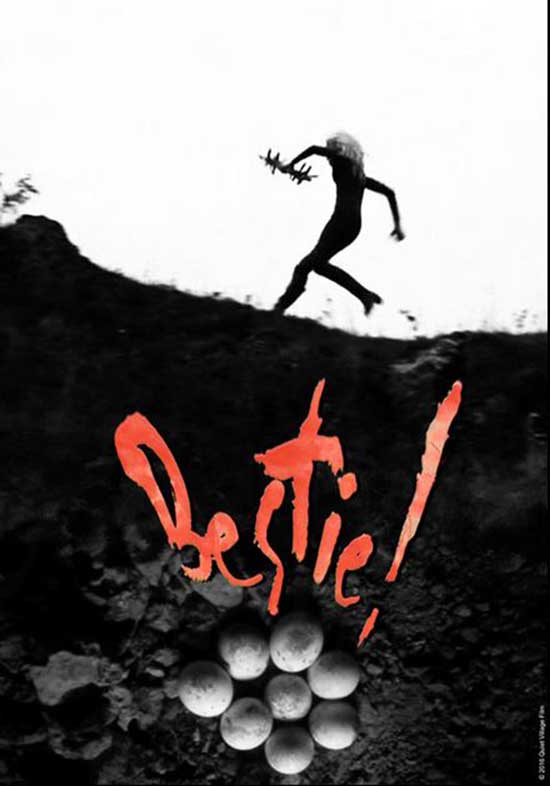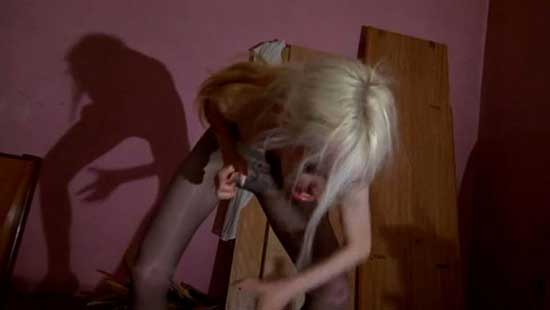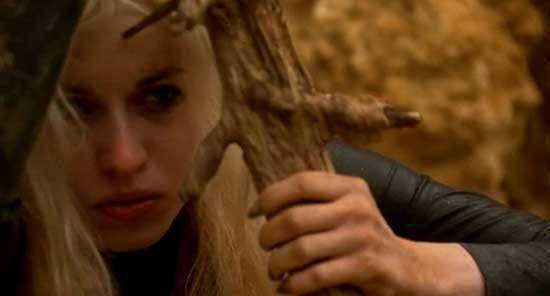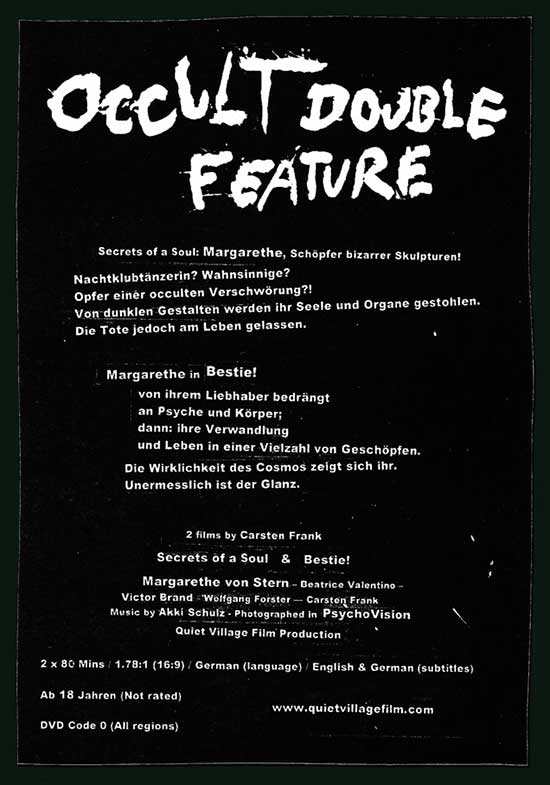SYNOPSIS:
Margarethe in Bestie ! her psyche and body imposed on by her lover; then: her mutation and lives in a multitude of creations. The reality of the cosmos reveals itself to her. Boundless in shining beauty…
SYNOPSIS:
Secrets of a Soul: Margarethe, Creator of bizarre sculptures! Night club dancer? Mad woman? Victim of an occult conspiracy?! Dark menaces steal her soul and organs. Though dead they keep her alive…
REVIEW:
Quiet Village Films is a production and distribution company out of Germany headed up by Carsten Frank. While a lot of horror fans probably know Mr. Frank either from the films of Marian Dora (he plays the lead in Cannibal, Melancholie der Engel, and Debris Documentar) or his appearance in some of the works of Jess Franco or Ulli Lommel, more recently he has been focusing most of his energy toward writing and directing. And that brings us full circle, as Quiet Village has just released Frank’s first two films – Secrets of a Soul and Bestie! – together in a limited edition, hand-created package under the title Occult Double Feature.
After opening with a trailer for the upcoming release, The Day of the Purple Sun, we move into our first film of the double feature – Secrets of a Soul (from 2012), written and directed by Carsten Frank, and co-written by the lead actress, Margarethe von Stern (who might be familiar as either Clarissa, the girl in the wheelchair in Melancholie der Engel, or as Jennifer, the lead actress in Andreas Bethmann’s Help Me I am Dead). This is a film that is at times surreal and at times disturbing, but consistently very visually appealing. This is equally thanks to the cinematography of Jutta B. Reinhardt, and to von Stern’s emotive acting abilities. There is very little dialogue throughout the film, and it is all pretty much delivered via voiceover, so von Stern has the responsibility of communicating non-verbally at a level almost on par with a silent film star. Thankfully, her skills are pretty on point.
To try to discuss the plot of Secrets of a Soul would be to delve into tricky territory. The story told here is very much a non-linear one, symbolism and artistic shots taking precedence over any kind of straight-forward narrative. Everything is very minimal here, from the dialogue to the cast. Margarethe von Stern portrays the main character, also named Margarethe, a woman who seems to be searching for something. We see her crawling into a lounge-like room as the other party guests make their way around her. There are women dancing, and men talking, and all the while Margarethe appears to try and remain unseen. When a woman starts dancing on Margarethe, then grabbing at her, the tone of the party changes, morphing into a version of the party in Blue Velvet if Luis Bunuel had directed it. While one man is seen eating bugs, another pulls a large clock out of his mouth, and soon the partygoers have surrounded our helpless protagonist and are pushing animal skulls at her.
Moving forward, we are encountered with similarly interesting scenes that are both confusing and wonderful. Two men in black cloaks (played by Wolfgang Forster and Victor Brandl, who played “The Flesh” opposite Frank’s “The Man” in Dora’s Cannibal) appear as ghosts and pull insects from Margarethe’s body. A voiceover tells us these black shapes have stolen the woman’s soul while leaving her body alive, and it is this event that brings a little bit of clarity and structure to the film, as Margarethe sets out to find these figures and get her soul back. Along the way, there are other scenes that add texture to the experience, specifically when Margarethe enters a room full of bees, then lays in a birthing position against a glass case full of insects constructed into art pieces. There is an underlying message of rebirth, or reclamation of self, throughout Secrets of a Soul that is coupled with a symbolic “birthing” of her art, which contains bits of her “soul.”
Part two of our double feature is 2013’s Bestie!, written and directed by Carsten Frank, and again featuring Margarethe von Stern in the lead role. Bestie! might seem a strange title for this film, but keep in mind that in German, “bestie” is not annoying young adult slang term for a friend; it means “beast.”
This one, while shot and constructed in a similar style as Secrets of a Soul, is a little more straight forward, or at least it seemed that way. Margarethe is playing a character named Margarethe again, a woman who seems to be held back in life by an abusive partner (played by Carsten Frank). Again, we have a voiceover rather than direct dialogue, this time speaking of the transformation that occurs within a chrysalis, and how amazing it is that a small, frail insect will form this cocoon around itself, then come out a completely new creature. This is also an apt description of the plot of the film.
After having a drink at a bar, Margarethe comes home to an angry, volatile, and naked Carsten Frank, her lover. He grabs her, threatens her with physical violence, then forces her to remove her clothing. He holds a glowing lamp over his crotch and approaches her, but she fights back, biting his throat, then eviscerating him, growling and splattering blood everywhere. She wraps herself up in a curtain (much like a chrysalis), and next we see her, she is not timid or scared, but rather animalistic, wearing an all-black leather (or rubber) suit and a nylon over her head as she embarks out into the wilderness. She interacts with nature, eventually protecting a nest of eggs (her own?) from any attackers. She seemed trapped and stuck in a bad place at the beginning, but once she liberated herself, she was able to become free and spread her wings and progress.
Carsten Frank’s style is occasionally like that of Marian Dora, but not much needs to be made of the comparisons. There are similarities now and then with technique or on-screen imagery, but there are far more differences. Frank’s films feel like dreams, at times pleasant and beautiful, and at other times confusing nightmares. There is a good deal of focus on visuals and symbolism here, and less emphasis on storyline, whereas Dora’s films have more structure to them. Both of Frank’s films in the Occult Double Feature, are well shot and very interesting sensory experiences.
They lean far more toward the art side of film, and will leave audiences expecting a strong linear narrative a little disappointed. But that is only to say that these are not mainstream-accessible movies, and not at all indicating the quality is low. On the contrary, both are strong and visually appealing showcases for Margarethe von Stern as an actress as well as Carsten Frank as a director. Strongly recommended for fans of 1960s and ‘70s arthouse films.
 Horror News | HNN Official Site | Horror Movies,Trailers, Reviews
Horror News | HNN Official Site | Horror Movies,Trailers, Reviews
